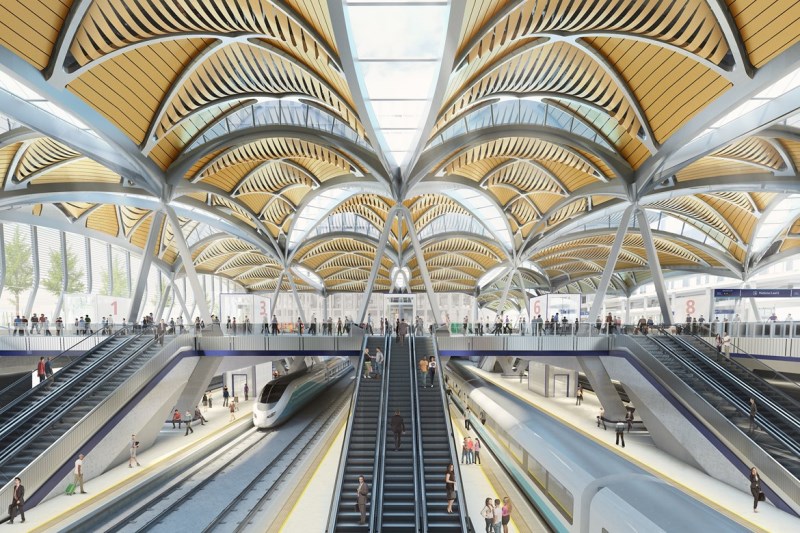NotATrainspott
Established Member
- Joined
- 2 Feb 2013
- Messages
- 3,223
The problem is no more platforms will be built off the HS network so its difficult to see how short turnarounds in London and long turnarounds at Glasgow / Liverpool / Lancaster / Newcastle / Sheffield will work.
This seems a little bit daft. If the cheapest way to make the HS2 timetable resilient is to build another few platforms at the 'country' end of the network, then why shouldn't we do it?
I know that HS2 doesn't want to get involved in too much scope creep, but NR or regional transport bodies would probably be delighted to be given a bundle of cash to spend on new infrastructure for their railway networks. If that bundle of cash is cheaper than doing the works at the London end, then the Treasury isn't going to complain much either.
NR seem interested in the idea of an extra bank of platforms to the west of Glasgow Central. An extra four platforms could allow suburban services to shift westwards, leaving more room at the eastern end for HS2 services. Building it wouldn't be that complex, or require too much strategic planning (unlike works to the eastern end, where you might want to worry about 400m platforms over the Clyde). It's a project that will probably happen anyway at some point, so having HS2 fund it just means that HS2 can benefit now from the certainty it'll be delivered.

